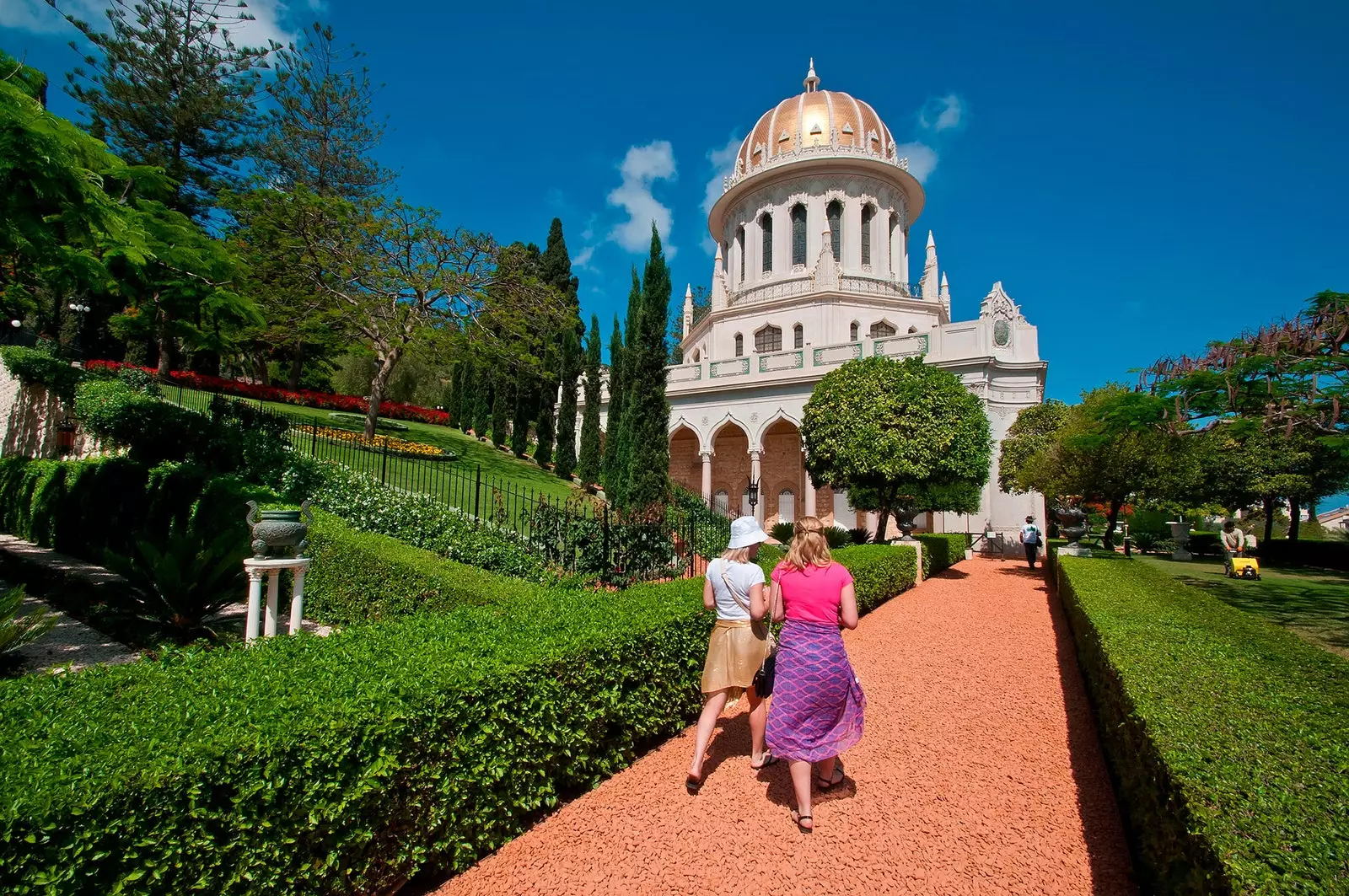
Days of art, falafel and religion: the most multicultural Israel is in Haifa
There are three things that grab your attention as soon as you set foot on Haifa .
A: the topography of the city, towering over the Mount Carmel , 546 meters high, to later spread down the hill until it almost spilled, literally, into the Mediterranean.
Two: the unusual mix of cultures , which is reflected in its streets through a set of architectures and neighborhoods in perfect harmony: next to old churches rise the minarets of the mosques or glimpse small signs that indicate that there, behind that corner, a synagogue hides. To this must be added the peaceful coexistence with other groups such as Druze, Ethiopians or Orthodox Christians : the mix is exciting.
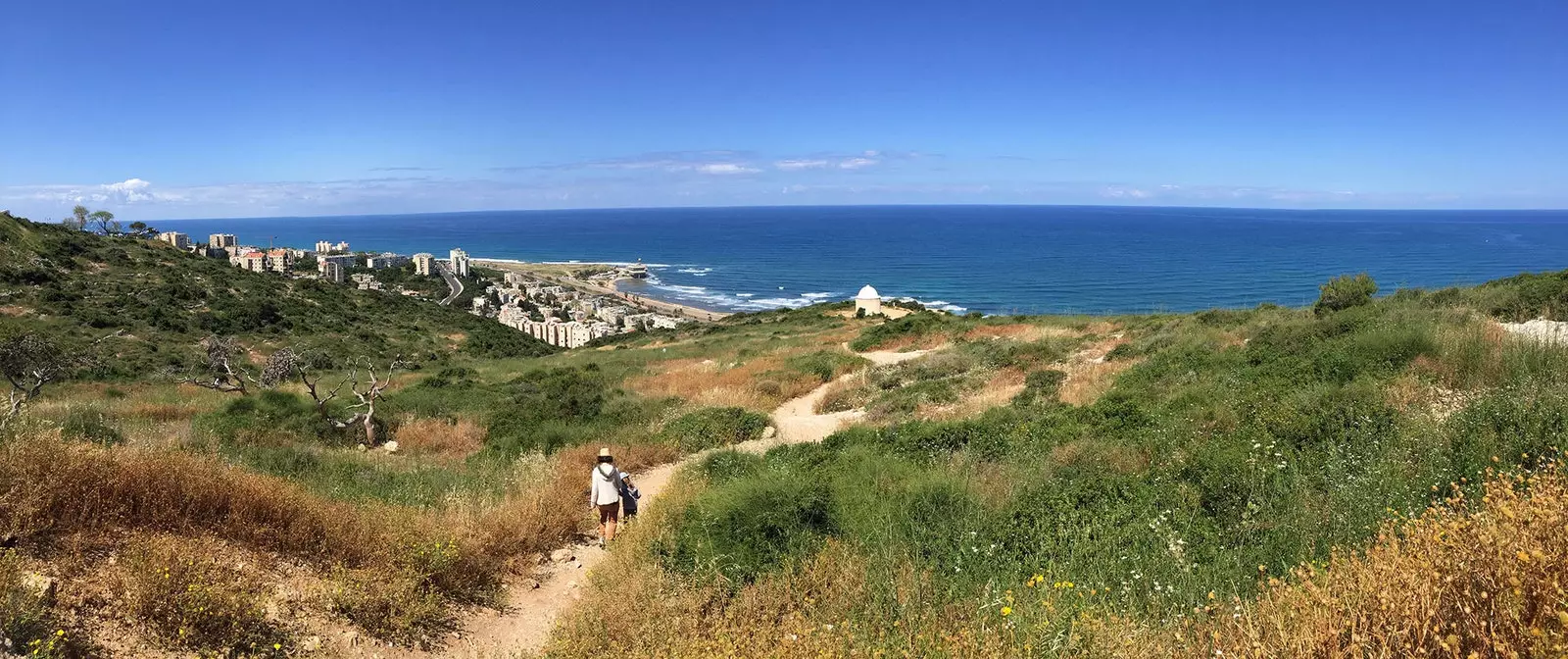
Road west of Mount Carmel in Haifa
And three: more religion . the towering Baha'i Garden , owner and lord of the space, which with its green areas spread over 19 terraces govern the urban postcard of Haifa, endowing it with all possible splendor.
It is just where these end -or begin, depending on how you look at it-, at sea level, where Ben Gurion avenue starts , the backbone of the city's slum and the epicenter of much of its social life. Up to him where we are determined to begin to take the pulse of the one who is, by the way, the third largest city in Israel.
THE GERMAN COLONY IS GASTRO
Visiting Haifa necessarily means visiting this little piece of Germany brought to the Middle East . Because yes: while walking along its main avenue, what you feel is that you have been put on a plane and taken to any traditional German town. This, like everything, has its explanation.
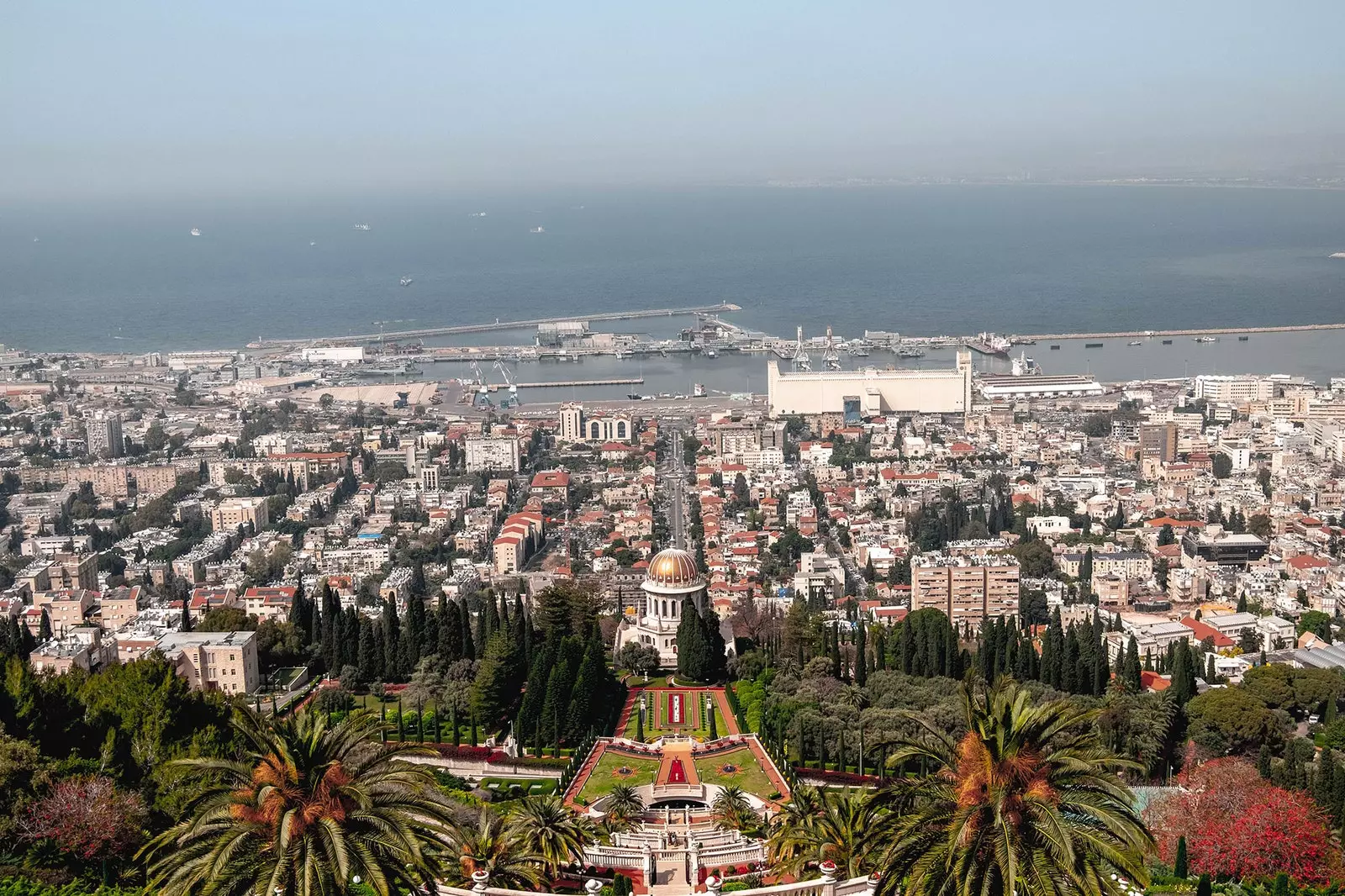
Baha'i Gardens, in Haifa
It turns out that in 1869 arrived in these parts a whole Protestant Christian German colony belonging to the Temple Society -Templars, yes, but nothing to do with the knights-. They settled in the area and built a series of buildings - mostly houses - in honey-colored stone, each one covered by red tiles and with a German inscription of a biblical quote above the door.
When the British arrived in 1939 they expelled them , but the neighborhood remained intact, just as it has survived to this day, now converted into an area full of atmosphere, restaurants and cute cafes.
Will have to visit the area walk her relaxed , feel and live the soul that is breathed in it and, of course, sit down in one of its restaurants to taste the gastronomic offer. We have just started, yes, but we cannot miss this opportunity.
A good option is fattoush , a restaurant-gallery with a boho-chic decoration whose terrace, and among hundred-year-old trees and dozens of plants, appear stylish umbrellas, tables and the most cute armchairs. Inside, relaxed atmosphere and wanting to enjoy life : we ordered a lamb kebab and a quinoa salad, flavors from here and there on the plate.
Before leaving, we can avoid looking at a sign next to the door: “ All colors, all ages, all cultures, all genders and religions are welcome here. …”. Wow, how well described and summarized the idiosyncrasy of the inhabitants of this city has been.
From this point the avenue ben gurion it continues until it reaches the sea, and consequently, the port, the largest and busiest in all of Israel. Taking a walk around the area, full of shops of all kinds, will always be a good idea.
TROPICAL GARDENS WHERE TO WORSHIP
We retrace our steps and go straight to the great attraction of the city: the Baha'i Gardens dominate Haifa in the form of a wonderful green waterfall.
Declared UNESCO World Heritage Site in 2008 , it is one of the two holiest places for members of the Baha'i religion: here, in the vaulted mausoleum, rest the remains of the Bab, predecessor of Baha'ullah, the main prophet. Before being executed in Persia, the Báb was imprisoned in dark cells, hence the sumptuousness of the green areas and the light that the place gives off, that he tries to help him recover what he lost for so long.
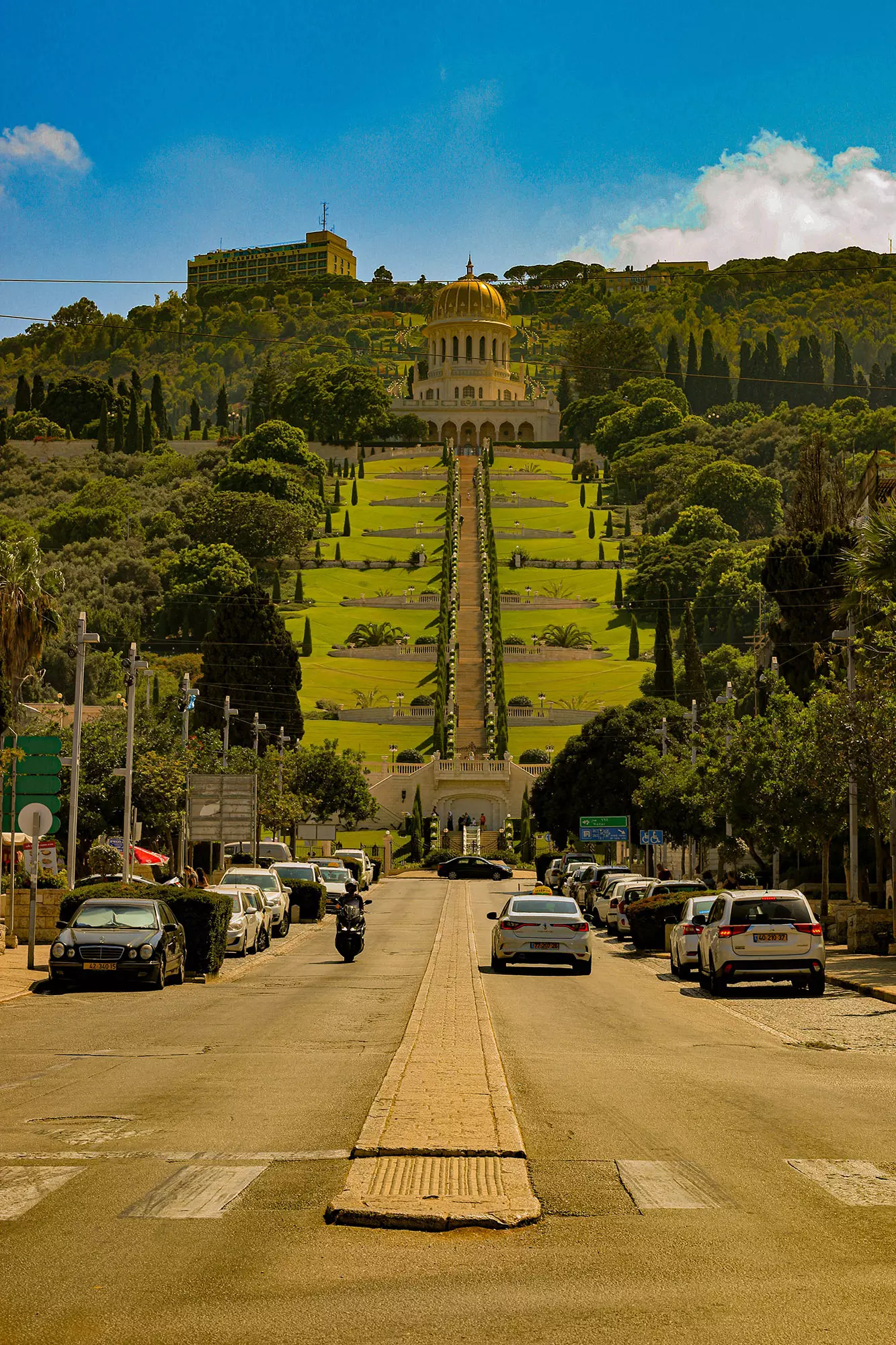
Ben Gurion overlooking the gardens
The visit, which is completely free, goes through terraces full of plants, cacti and flowers that overlook the city from above and offer the most beautiful panoramic views. He was the Canadian architect Fariborz Saba in charge of its design, while the sanctuary, which combines styles from the East and West, was taken care of by the Canadian William Sutherland Maxwell.
One more detail: No religious services or ceremonies are held in the temple. It is a place dedicated solely to meditation and prayer.
WADI NISNAS, WHERE YOU FEEL LIFE
With a calm spirit and deep relaxation, we return to real life, the one that takes over the streets of Haifa as soon as we land on the Wadi Nisnas neighborhood.
The chaos here is caused by the traffic, the horns and the hubbub of those who go from one place to another carrying bags in their hands. Here you can feel the essence of the Middle East, between his bazaars, its street food stalls and its narrow alleys . In its day it was an Arab working-class neighborhood, until in the 1948 Arab-Israeli war many marched. Wadi Nisnas welcomed the 3,000 Palestinians who decided to stay.
We dodge children playing in the middle of the street, we are surprised by the shouts of the merchants, and we succumb to the smell that comes from that small business whose sign in Arabic we only understand one word: falafel . Well here we go.
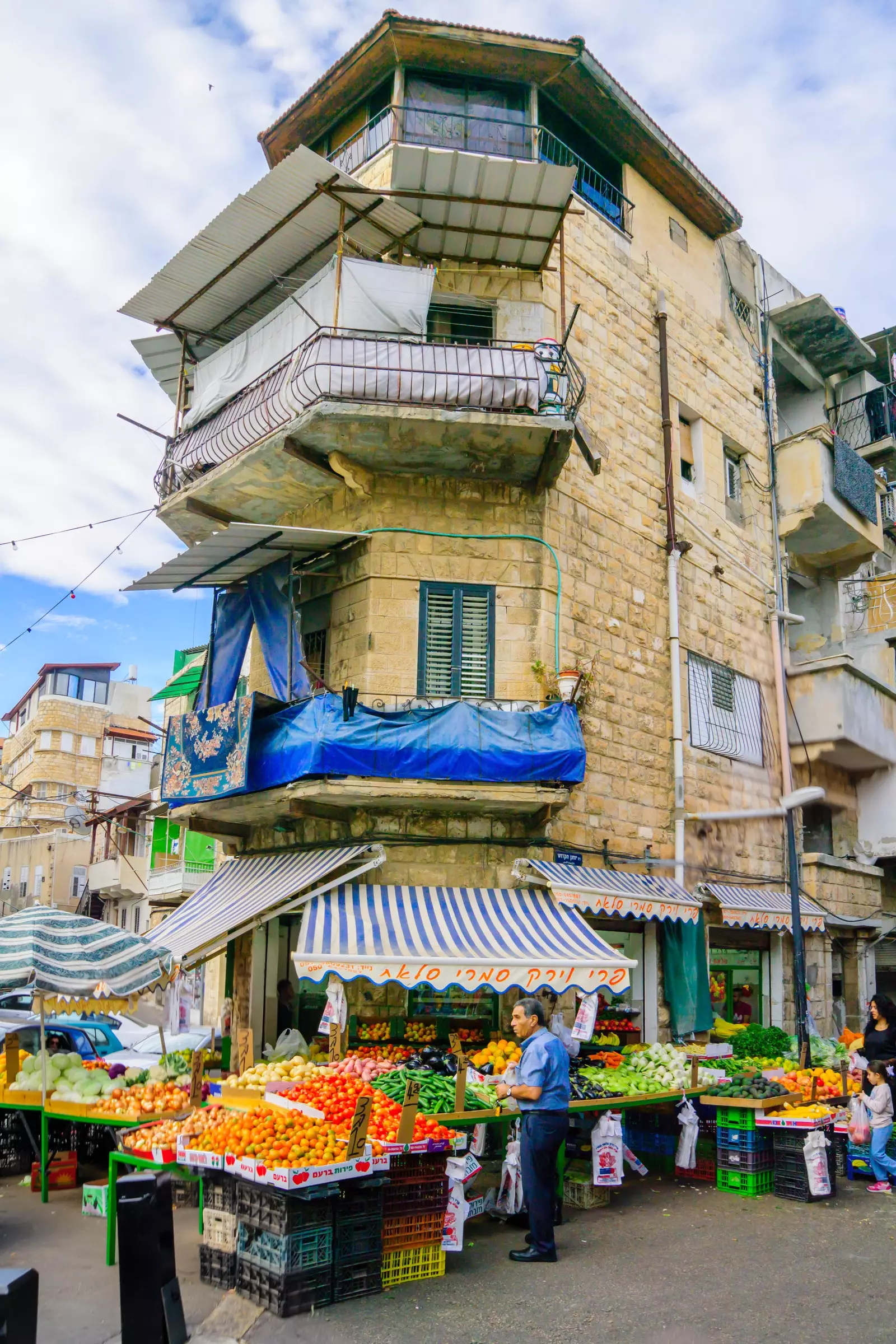
Wadi Nisnas, the neighborhood of Haifa in which to order yes or yes a falafel
effectively , Alif greets us with a huge smile from across the **HaZkenim Falafel bar,** glad we're visiting him in his little bar. The specialty of the house -and practically the only offer, in addition to some exquisite pitas- are those croquettes based on chickpeas or broad beans so traditional and typical on this side of the world.
He invites us to sit at the bar and, after serving us what they assure us are the best falafel in all of Israel –his recipe has been ensuring the success of the business since 1950-, he asks us about our lives between laughs and jokes. “You are in luck”, he tells us: “There is usually quite a queue to get in”.
Without leaving Wadi Nisnas, we decided to visit the Haifa Museum of Art , which has temporary exhibitions of modern art by local artists. However, the art that really surprises us is the one we see on the way: the streets and buildings of the neighborhood are populated with samples of urban art. Both Palestinian and Jewish artists have been leaving their mark with murals and graffiti in which they announce and denounce. The walk seems wonderful.
HAVING COFFEE IN HADAR
More shops and more restaurants shape another of the city's neighborhoods that concentrates much of the daily activity: here the residents of Haifa live, shop, eat and dress. All in one.
But they also reflect on their future and what they want from it: there is an increasingly current and visible tendency for Haifa becomes a free city , outside the prejudices and cultural standards to which the rest of the country has accustomed us, in large part. And, as we have deduced by now, they are getting it.
Much of that movement is brewing on the streets of Hadar, in cafes like the Elika Art Cafe , where a large part of the cultural germ of the Israeli city. The most curious thing is that a lot of the blame for this - in the positive sense, of course - rests with the Arab community, which makes up 10% of Haifa's population and which increasingly He flees more from that conservatism so allegedly rooted in the Muslim religion: supports freedom of thought, language, religion and sexual orientation.
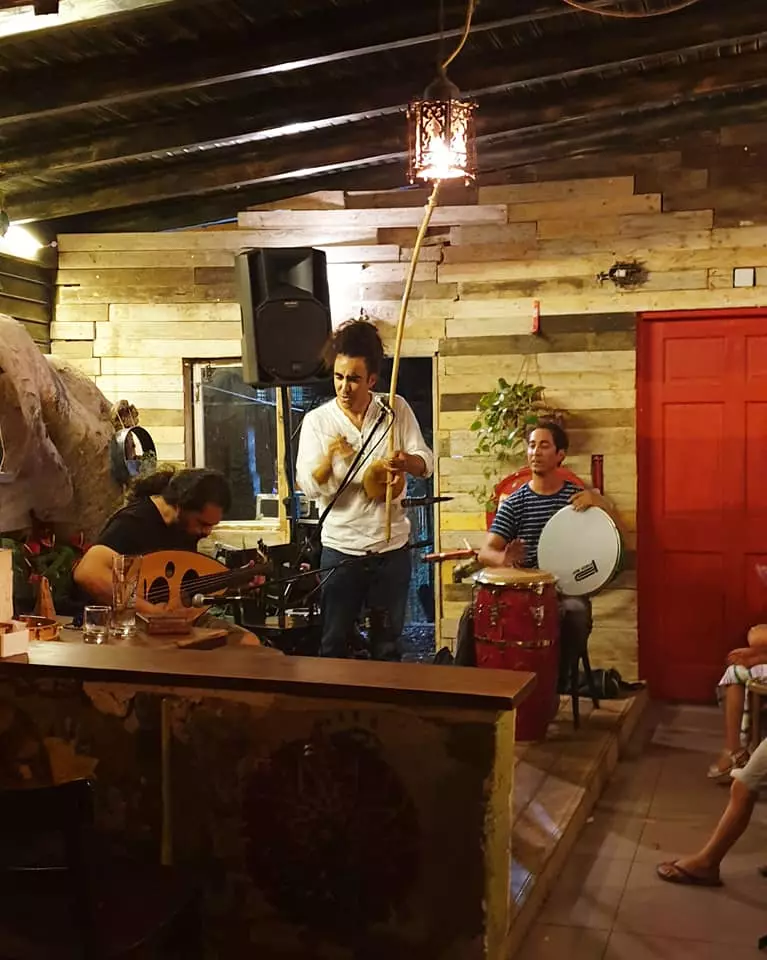
The cultural germ of the city
Believe us: these are enough excuses to visit Hadar, but if we want more, we will find it: the ** Madatech , the National Museum of Science, Technology and Space**, has impressive exhibitions to bring science closer to everyone.
AND THERE ARE STILL MORE...
If the views from the Jardines de Bahi'a had fooled us, but we want them even better, we will only have to go down to the promenade to take the cable car that leads to the Carmelite Stella Maris Monastery, on a slope of Mount Carmel: the place where the Christians settled during the Crusader era. Here was erected in 1836 this temple built in marble, a most inspiring place for all believers.
A little further up the mountain, another emblematic place: the Elijah's Cave , a G 14-meter route considered a sacred place for the three prevailing religions, and where the prophet is believed to have taken refuge during a journey through the desert.
The atmosphere inside is most mystical: while the faithful chant their prayers against the walls of the cave, we have no choice but to contemplate, once again, views of the city from above . A corner of Israel that is stomping, yes, but setting an example. I hope many more will follow.
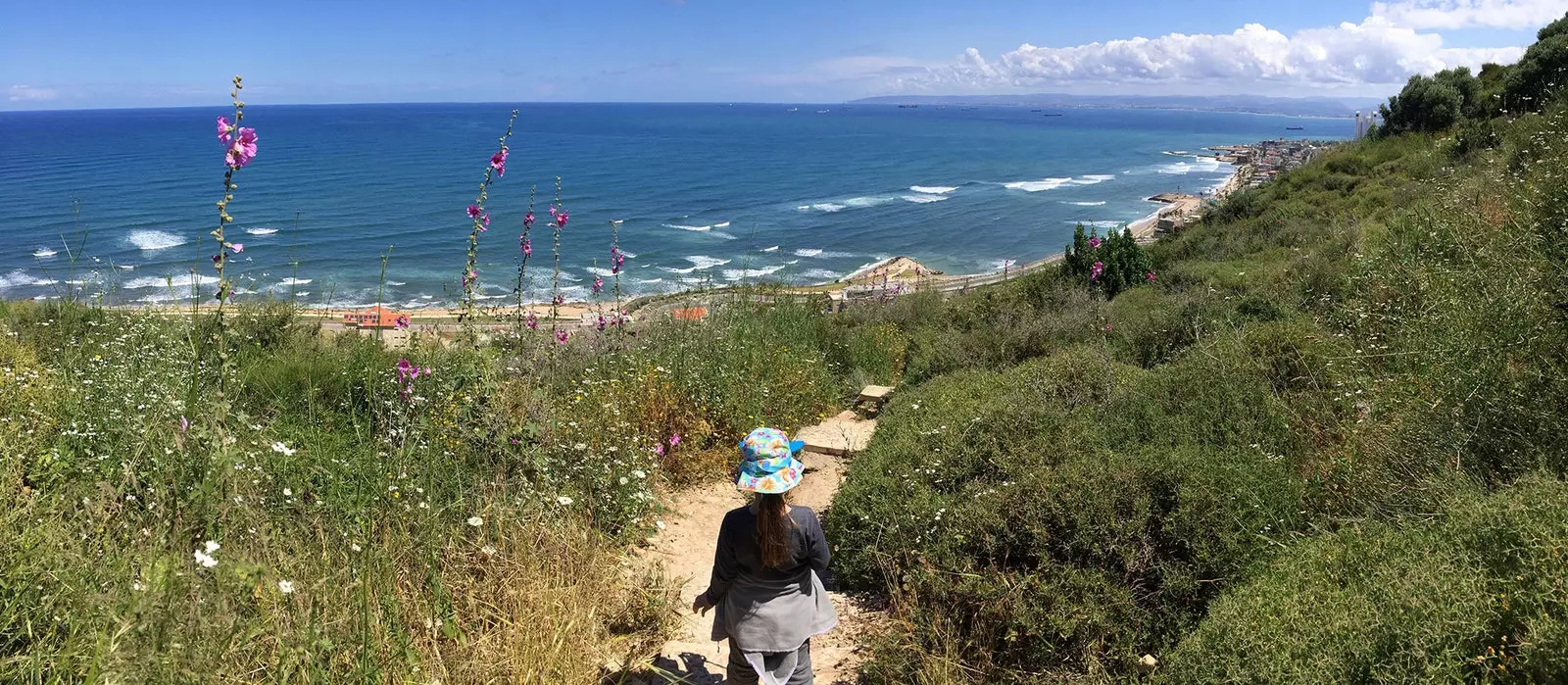
Stella Maris, Haifa
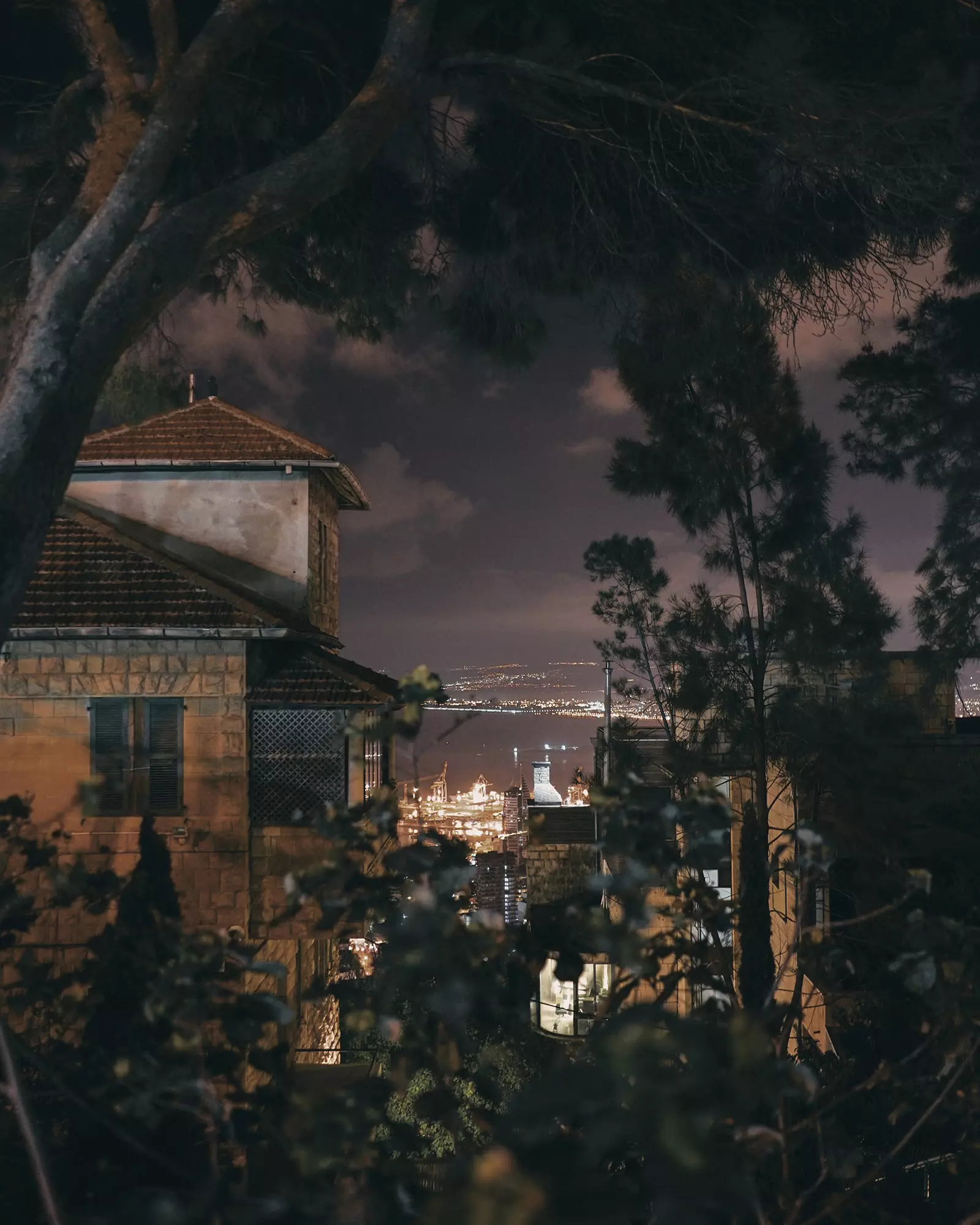
Night falls over Haifa
